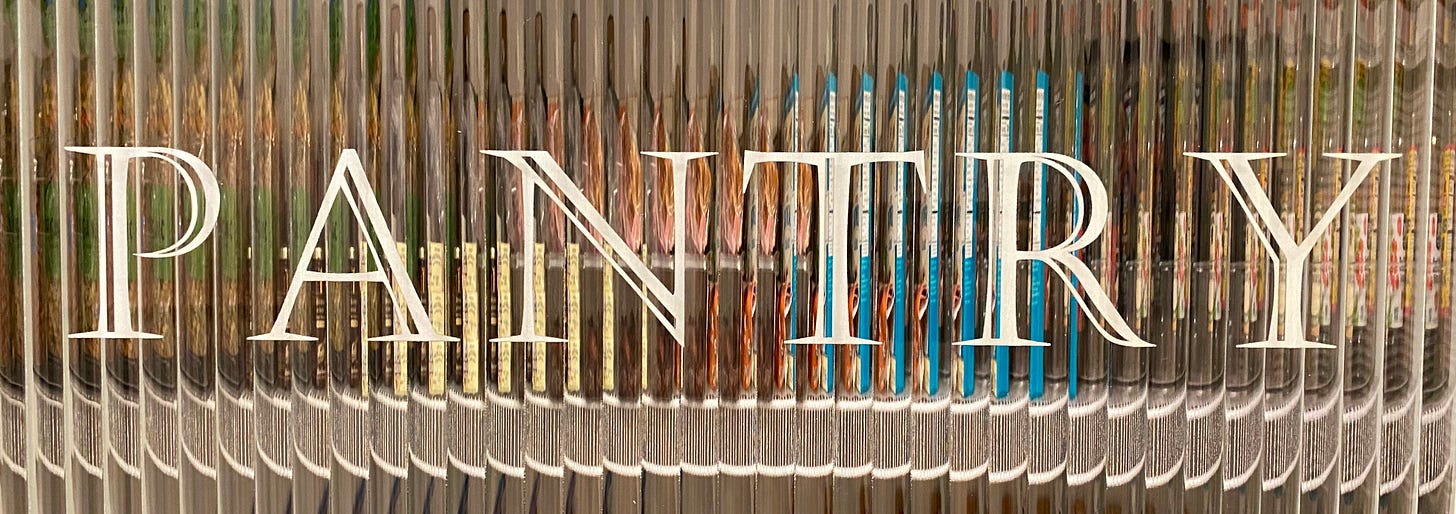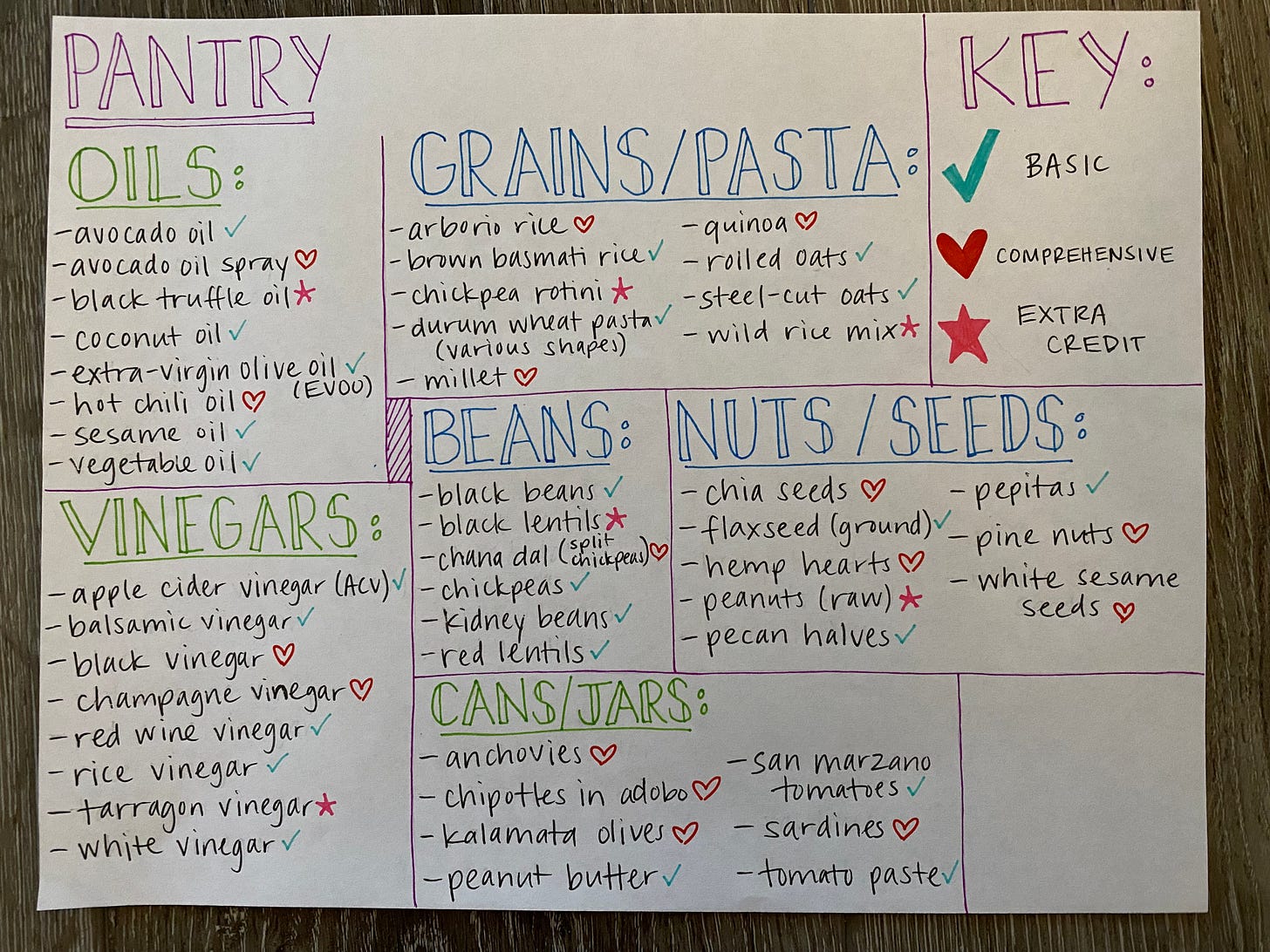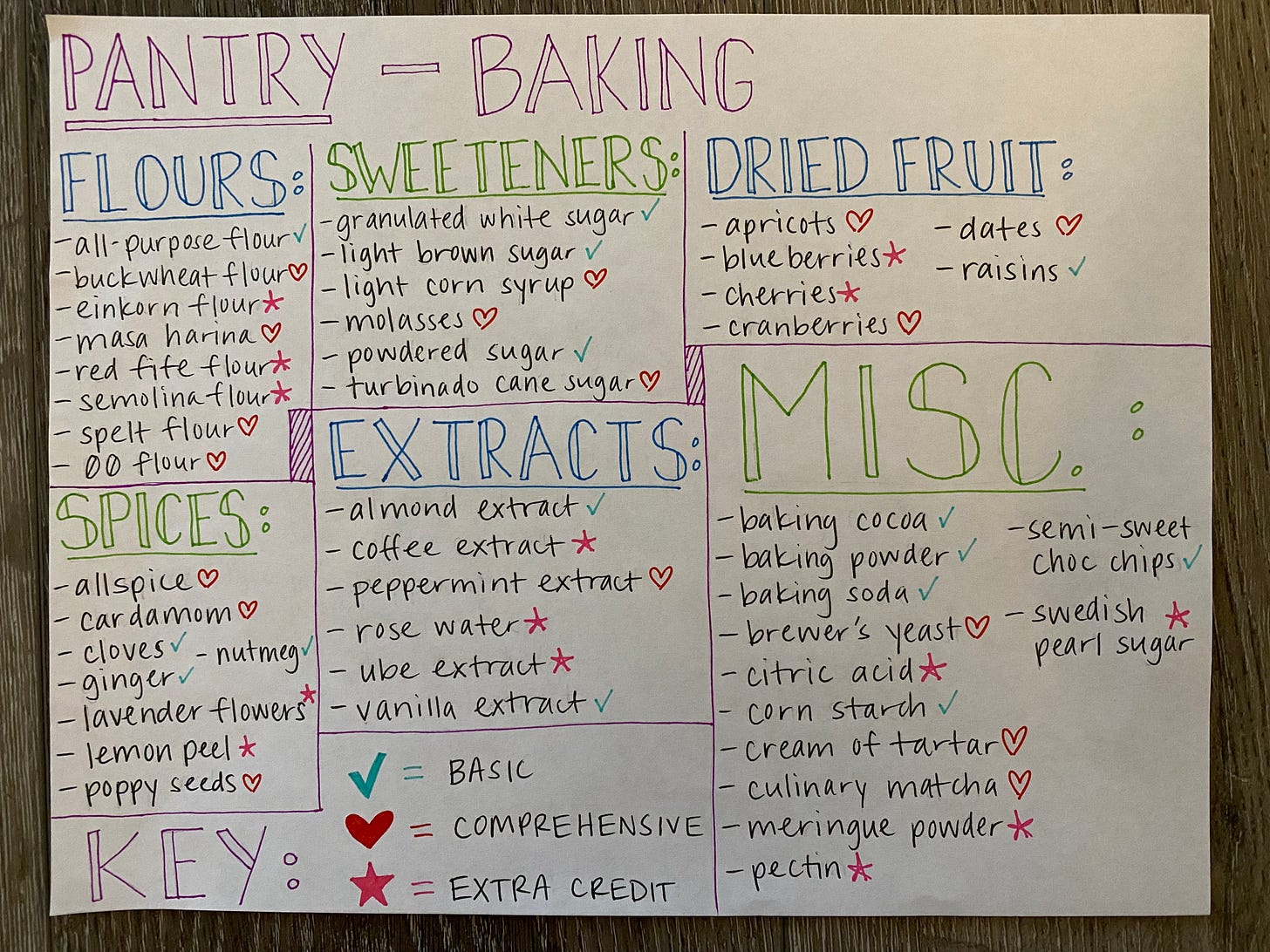Wow, lots of new readers this week! Welcome welcome welcome!
Many many thanks to
for promoting Lovingly Made over on this issue of his newsletter — I am so stunned and honored to be writing for all of you that I’ve decided to make this issue free instead of paid so that you all know what kind of stuff you can look forward to ❤️ AND I feel like this issue has a lot of especially helpful and valuable information. (It’s also one of those months with 5 Saturdays, so I’ll move to the half free / half paid model in September 😘)Dear readers, I have a challenge for you:
EITHER make a recipe from an issue from this newsletter — post a picture on social media — include a link to the issue from which you got said recipe — tag me (Sarah Cook of Lovingly Made) or my business name (Facebook: A Cook In Your Kitchen or Instagram handle: @acookinyourkitchen)
OR become a paid subscriber
you will get a free pantry consult!
A total inventory of your food supply will be made — by me or you, depending on location — and I will give you 5 recipes that you can make with minimal grocery shopping.
(I currently have six paid subscribers waiting for me to schedule their pantry consults — I will be contacting you after the holiday weekend! — and future consults will be scheduled as they come in.)
A look inside my pantry, and you’ll probably be astounded and then wonder to yourself “I’d lose my goddamned mind.” Don’t worry, I do. It’s overwhelming, and I’m not going to put a picture of it here. It’s organized, but it’s not. I wish I had it all together, in little uniformly labeled spice jars, nicely displayed in even rows. The best I can do is a few lazy susans and other random Home Edit storage containers with items grouped by their function and spice family (thanks to this handy little book by Harold McGee), and I’m just going to accept that at least I know where everything lives and can get down to real organization when the toddler man goes to school?
I worry about myself and my proclivity to buy spices and other pantry staples that we don’t actually need. It’s something that I’m actually trying to fix by working through what’s already there — I feel a sense of pride when I finish up a random ingredient that has been living on the shelves of our past 3-4 living spaces, or 8-10 years 😬🫣🙃
And then there are the things that I have bought in bulk that seem insurmountable. Like this giant jug of dried parsley. (Upon receiving this in the mail: “I have a giant jug of dried parsley, and I know how to use it. For the next 5-10 years.”) Apparently I have issues with buying ingredients in bulk…
Knowing one’s pantry is an important first step to gaining confidence and comfort in the kitchen. When chaos is all you see in there, you are set up to be a reluctant cook. And then it can be even more intimidating to try and categorize and organize it all. Let’s just get it to *organized chaos* and call it a day, right?
So I started thinking about how I would present this information in this issue of the newsletter, and I was stumped for a bit. Like I said, it’s overwhelming, especially when writing it out on post-it note after post-it note. I sat with it, trying to envision how to suggest what you really need and what you might need a few times over the course of a few years. That didn’t make much sense to me because who am I to tell you what you do/don’t need? So instead of all that complicated nonsense, I thought I would just share exactly what is in my pantry at this very moment in time and how I’ve organized the chaos from my head onto paper. Believe it or not, there is a system! (And you can believe me because my Top 5 strengths from my StrengthsFinder test were: Individualization, Discipline, Deliberative, Activator, and Strategic — just little insights to how my brain works 🤓)
For me, I have to think of my pantry in three divisions: the basic — the comprehensive — the extra credit.
The Basics: as essentials, these things will get you by time and again, are used more often and therefore need to be restocked regularly.
The Comprehensive: these items will add more depth/complexity and open up your cooking to exploring different world cuisines.
The Extra Credit: the obscure, specialty things that were either bought for a very specific recipe or given as a gift, and will sit in your pantry forever unless you make a concerted effort to use them before they “expire” (never fully depend on an expiration date, spices especially — they just lose potency over time and can be used well past their printed expiration date)
Now, everyone is different. My comprehensive might be your extra credit. And my extra credit might be your basic — I’m regularly cooking things that are influenced by Western European cuisines, so a lot of my Eastern Asian ingredients are things that bounce between comprehensive and extra credit. It all depends on who you are and what you like to eat. But organizing by these categories can help simplify your life in the kitchen, making it an easier and more efficient space to navigate. What I have put together is just a starting point, a reference for how you might apply this system to your own pantry.
What you’ll see below are some artistically handwritten lists of exactly what is currently in our pantry. To simplify, I’ve listed everything alphabetically within each category and then put a little sign next to each item to designate basic ✅, comprehensive ❤️, or extra credit ⭐️ — a key/legend is provided on each page.
A note about a few of my absolute favorites and where I source them from :
silk chili flakes from Burlap and Barrel
buckwheat, einkorn, red fife, spelt flours from Janie’s Mill (local to Midwest)
mushroom drink products from Four Sigmatic
So without further ado, I present to you:
THE PANTRY VISUALS.
Let me know if you have any questions about what’s in my pantry or how you might want to use some of your more obscure pantry items. Like, what do I use wild icelandic kelp for?? (Answer: I’m getting around to it.)
From the bottom of my heart, thank you for being here.
❤️ Sarah








